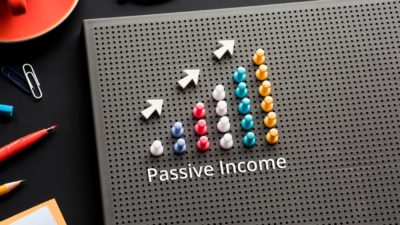Very few FTSE 100 companies have been reporting of late, but next week on Wednesday 7 May we should have full-year results from J Sainsbury (LSE: SBRY). So what are we expecting?
 A halt to growth?
A halt to growth?
Sainsbury has enjoyed a few years of very healthy earnings growth, at a time when market leader Tesco has been struggling. But forecasts suggest that might have topped out. There’s a 4% rise in earnings per share expected (EPS) for the year ended March 2014, but the following year should see that fall by 4% and there’s no growth predicted for 2016. In short, we should see three years of overall flat earnings.
Something similar is expected from the dividend, although this year should see a hike of 4% to 17.4p per share — before a couple of expected flat years. But if the forecasts prove accurate, that would still bring us a 5.4% yield for 2014 on a share price of 330p.
Should you invest £1,000 in Entain right now?
When investing expert Mark Rogers has a stock tip, it can pay to listen. After all, the flagship Motley Fool Share Advisor newsletter he has run for nearly a decade has provided thousands of paying members with top stock recommendations from the UK and US markets. And right now, Mark thinks there are 6 standout stocks that investors should consider buying. Want to see if Entain made the list?
Tough Q4
So how are things going so far? Well, in a fourth-quarter update on 18 March, things sounded like they’re getting tough, with total sales in the final quarter down 1.5% and like-for-like sales down 3.8%. Chief executive Justin King told us of a “decline in sales in the quarter reflecting tough comparatives“, though he did point out that Sainsbury’s got a boost in the equivalent period last year by not selling horses disguised as cows.
 Market share appears stable at 17%, after Sainsbury’s has clawed back some of Tesco’s lead in the past couple of years, and the company’s own-brand labels are growing in popularity. But in general, the food retailing business still seems dogged by austerity, and that doesn’t best suit Sainsbury’s more upmarket positioning.
Market share appears stable at 17%, after Sainsbury’s has clawed back some of Tesco’s lead in the past couple of years, and the company’s own-brand labels are growing in popularity. But in general, the food retailing business still seems dogged by austerity, and that doesn’t best suit Sainsbury’s more upmarket positioning.
The trick for Sainsbury over the next couple of years will be to hold on to the market share it has built up, and hopefully benefit from an upswing in groceries shopping once economic conditions hopefully strengthen further.
Shares look cheap
Until then, are Sainsbury shares worth buying? Well, at today’s price levels they’re on a P/E of only 10 to 10.5 over the next couple of years, and that’s way below the FTSE’s long-term average of around 14. And those expected dividend yields of better than 5% should be more than sufficient to justify the current share price — with the annual payout being well covered.







